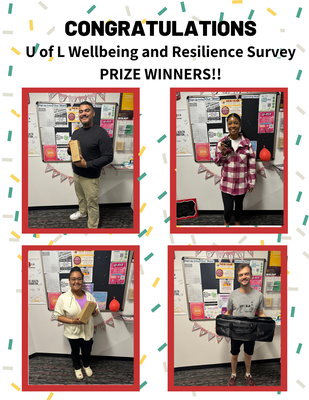UofL Smart Plate
The UofL Smart Plate emphasizes nutrient-dense foods and minimizes the emphasis on calorically-dense foods that are often promoted by the food industry. The 2016 version represents 18 months of fact-checking with current nutrition science, focus groups with students and professionals, multiple revisions…and awaiting the unveiling of the recent revisions to the US Dietary Guidelines. The UofL SmartPlate is, indeed, a state-of-the art representation of leading-edge nutrition science. Our original inspiration was the team of nutrition experts at Harvard School of Public Health who developed the Harvard Healthy Eating Plate. The UofL SmartPlate is a template for thinking about eating for wellbeing and vitality. It is not a diet nor a prescriptive set of meal plans. And it correctly teaches nutrition science which is a “fix” for key flaws in the U.S. Department of Agriculture’s MyPlate. (Since the new dietary guidelines were revealed in January 2016, the USDA is now re-designing the previous MyPlate.) But we don’t have to wait because we have the UofL SmartPlate ready to roll!
The UofL SmartPlate plus the 4 Key Nutrition Concepts, the 80/20 Guideline and the Basic Pantry concept provide the framework for all our nutrition education in dining venues and program; cooking schools; wellbeing coaching provided by our Nutrition Navigators and UFit Assessment Team, and the clinical nutrition counseling provided at Campus Health Medical Services by Director of Health Promotion Wellbeing Central, Karen Newton, MPH, RD.
Apply these 4 Key Nutrition Concepts as the framework for your food choices:
- Nutrient Density: consider the quantity & variety of nutrients in a food portion compared to its energy content.
Tip: whole fruits (not juices), veggies and legumes are nutrient-dense.
- Caloric Density: consider theenergy content (calories) in a food relative to its portion size.
Tip: juices, sodas, “sports drinks,” meat, cheese, oils, processed foods and alcoholic drinks are calorie-dense.
- Portion Determination: match how much you eat to your personal health and weight goals.
Tip: refer to Handy Portion card available from Nutrition Navigator booth and health promotion website.
- Local & Sustainable: Eat food sourced locally and grown sustainably.
Tip: shop farmers’ markets!
Reality Check: apply this 80/20 Guideline to be mindfully flexible with your food choices:
Aim for 80% of your choices to be nutrient-dense foods. That leaves you 20% for calorie-dense choices foods like pizza, snack foods, (a.k.a. “edible food-like substances”); alcoholic beverages; many desserts, fried foods.


